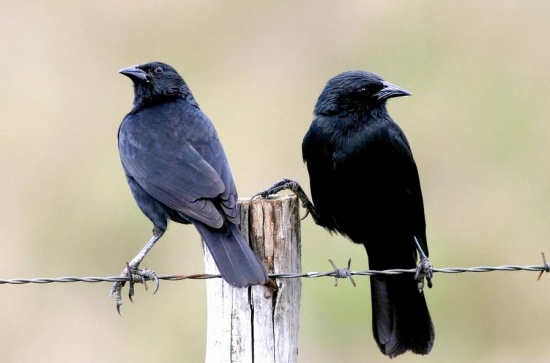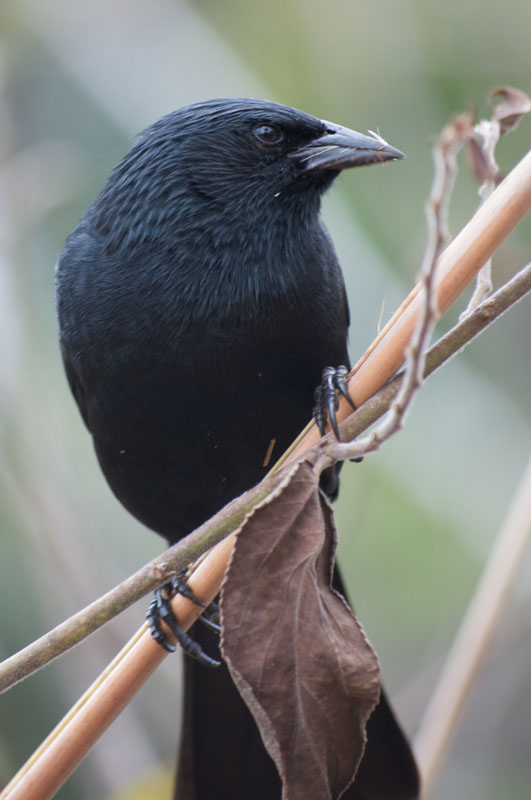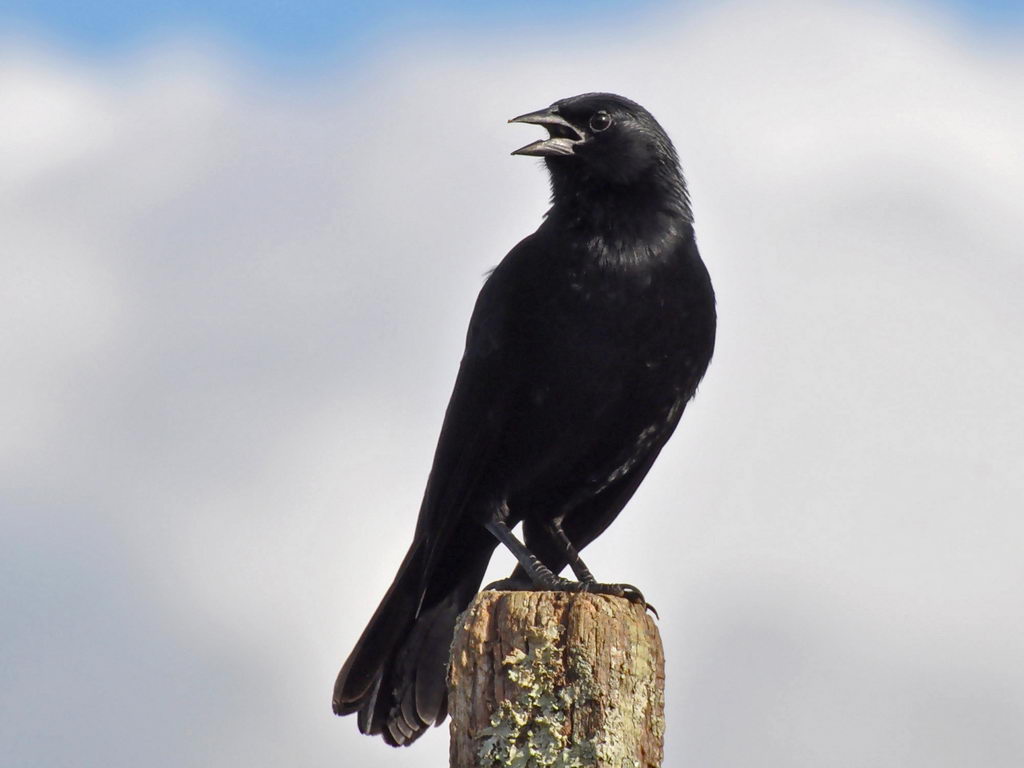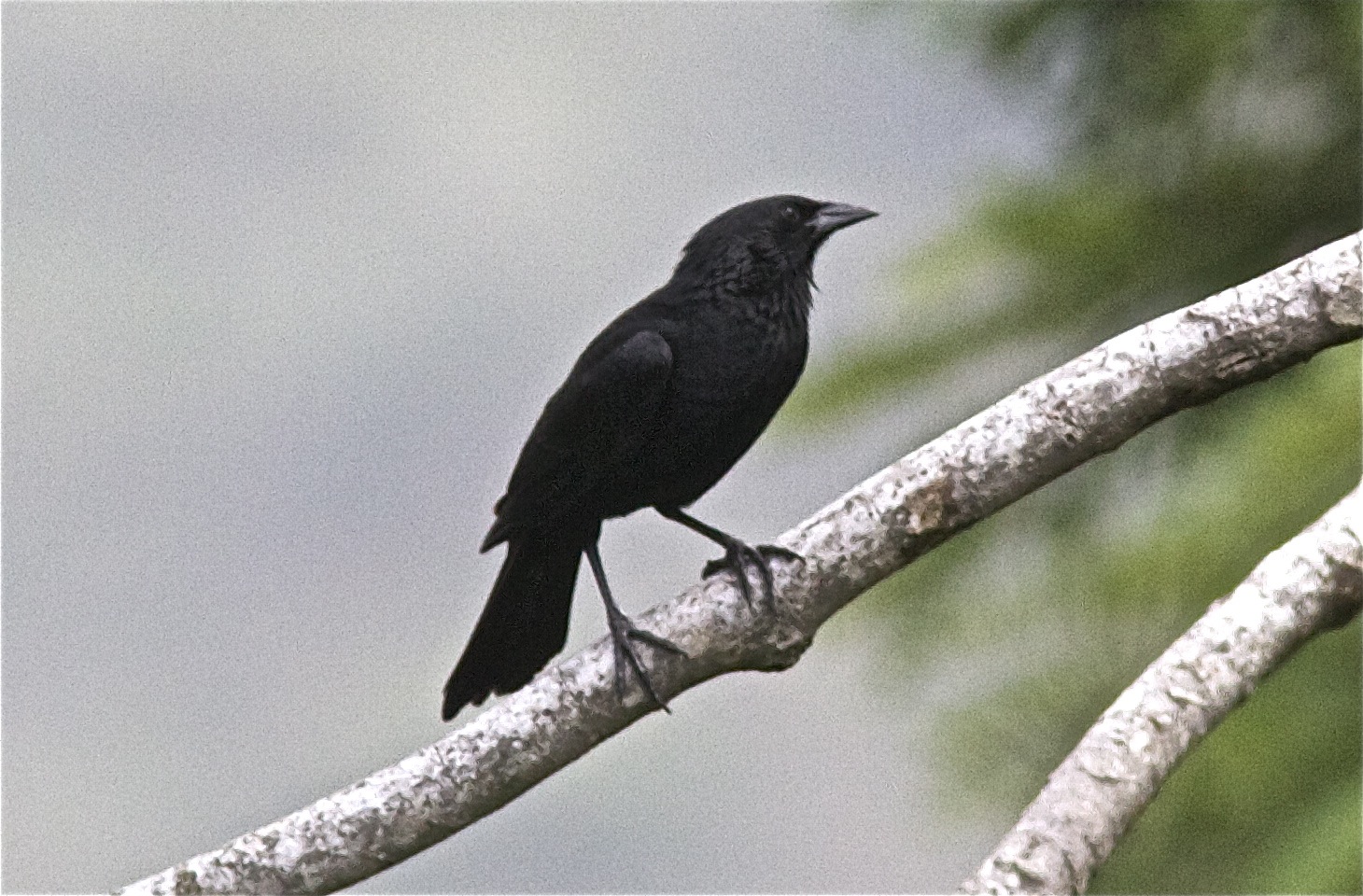
Gnorimopsar chopi
TAXONOMY
Agelaius chopi Vieillot, 1819, Paraguay. Two geographically discrete
forms are recognized.
OTHER COMMON NAMES
English: Chopi-grackle; French: Quiscale chopi; German:
Chopistдrling; Spanish: Turpial Chopн.
PHYSICAL CHARACTERISTICS
9–9.5 in (23–24 cm); female 2.6–3 oz (75–84 g), male 2.8 oz
(79.5 g). Sexes similar in color. Entirely black, showing slight
blue iridescence, with a black eye; crown and nape feathers are
narrow and pointed and a groove on the lower bill is sometimes
visible. Juveniles are similar, but lack iridescence and the
pointed feathers of the adults.
DISTRIBUTION
Resident from eastern and southern Brazil, northern Bolivia,
and southeastern Peru south through Paraguay, Uruguay, and
northern Argentina.
HABITAT
Farms, pastures, savannas, and marshy areas, from sea level to
3,300 ft (1,000 m).
BEHAVIOR
Chopi blackbirds are gregarious, and are generally seen in
flocks, which may be large. They invariably roost in large
groups, commonly in palm trees. They are extremely vocal,
and there is continuous vocalization in flocks, even when flying.
Singing and courtship tend to take place in trees.
FEEDING ECOLOGY AND DIET
Forages more commonly on the ground than in trees where
they eat a variety of plant and animal food.
REPRODUCTIVE BIOLOGY
Monogamous. Chopi blackbirds commonly nest in holes or
crevices in trees, fenceposts, banks, other birds’ nests, or old
buildings. When not nesting in a cavity, the nest is open and
cup-shaped, placed in a dense bush or tree. Four to five eggs
are laid in September–January. Information on incubation and
fledging not available.
CONSERVATION STATUS
Not threatened. They are common and locally abundant, and
probably have benefited from the clearing of land for agricultural
purposes.
SIGNIFICANCE TO HUMANS
Because of their attractive song, chopi blackbirds are often kept
as cage birds in Brazil.
Other popular Animals
Photo Gallery of - Chopi blackbird




 Animalia Life
Animalia Life